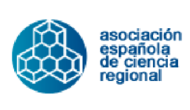Inter-Organizational Relationships, Knowledge Strategy and Innovation in Clusters of Cultural Tourism
The paper aims to identify the knowledge strategy (KS) developed by the firms belonging to tourism cluster according to their inter-organizational relationships and hence to analyse the impact on innovation. The empirical study is conducted on a sample of 215 firms located in UNESCO World Heritage Cities in Spain (WHCS). The methodology is based on both factor analysis and conglomerates analysis. The findings show that firms with high levels of both bonding and bridging capital carry out activities of exploration and also exploration of knowledge through an ambidextrous strategy. On the contrary, firms with scarceness of links (low levels of bonding and bringing capital) perform few activities of knowledge exploration and exploitation. On the other hand, firms that have high levels of bonding or bridging capital generally implement a punctuated equilibrium strategy. Finally, we prove that firms with an ambidexterity KS exhibit better innovation performance.
Check other articles from the issue ‘Clusters, Industrial Districts and Strategy’ or from other issues.


